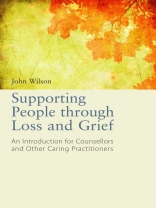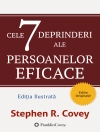What are the different theories of grief? What skills do you need for effective counselling? How can you support people experiencing loss and grief?
This handbook provides a comprehensive guide to counselling and supporting people experiencing loss and grief. It introduces the different models and theories of grief, how theory relates to practice and what the essential skills are, and how to work with people in practice. Working with families, understanding diversity and assessing clients are all covered, as well as a chapter on personal and professional development. Case studies and real life examples demonstrate skills in action, and each chapter concludes with notes for trainers.
This essential guide will help all those working with people suffering loss and grief to understand grief and how to help. Counsellors, bereavement support volunteers, palliative care nurses, hospice volunteers and students in these fields will all find this an invaluable resource. It can be used as a training guide as well as a resource for individuals, both as a learning tool and for continuing professional development.
Inhoudsopgave
Introduction. 1. The Nature of Grief. 2. Theories of Grief: Historical Perspectives. 3. Attachment Theory: How it Relates to Loss. 4. Counselling Skills: Theory into Practice. 5. Working with People Experiencing a Loss. 6. Families and Grief. 7. Working with Difference. 8. Clinical Assessment in Bereavement Support. 9. Personal and Professional Development. References. Index.
Over de auteur
John Wilson is a bereavement counsellor and trainer at St Catherine’s Hospice, Scarborough, UK. He has many years’ experience as a counsellor and trainer, and has been using the materials in this book to train bereavement counsellors for several years. He is currently studying for a Ph D, researching how bereaved clients make use of counselling.












